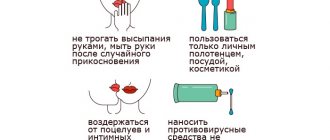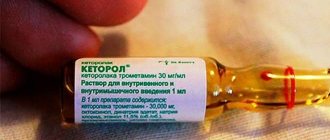Ammonia is a damaging factor in man-made accidents. A leak of this toxic substance can occur due to a ruptured pipeline at a nitric acid synthesis plant or an explosion of an ammonia tank at a nitrogen fertilizer plant. There are frequent cases of inhalation poisoning with ammonia solution in meat processing plants, dairies and other national economic facilities. The toxicity of ammonia requires strict adherence to safety measures at work, a clear algorithm for personnel actions in the event of a man-made accident, and knowledge of the main symptoms of ammonia poisoning.
Ammonia vapor can remain at the scene of an accident for a long time and spread over long distances by the wind.
Acute ammonia poisoning is accompanied by a chemical burn of the larynx, trachea and bronchi, skin and eyes.
How does ammonia poisoning occur?
The maximum permissible concentration of ammonia in the air is 20 mg per 1 m3. If it is higher, ammonia poisoning develops when such air is inhaled.
Ammonia emissions into the air, which increase its concentration to a level that can cause poisoning, occur as a result of accidents at chemical plants. Ammonia poisoning also occurs when working in sewer and treatment pits without the use of personal protective equipment.
When ammonia enters the bloodstream, it causes a sharp dilation of blood vessels and, as a result, a drop in blood pressure, up to the development of collapse. In addition, ammonia has a pronounced irritating effect on the skin, mucous membranes of the respiratory tract, and eyes; contact with it causes a chemical burn.
Features of hydrogen nitride and its scope of use
Ammonia is a gas that has no color, but has a pronounced suffocating odor. It is impossible to confuse this chemical substance. Hydrogen nitride is used in liquid form as part of household solvents. Its concentration in household chemicals reaches 25-30%. The chemical compound is most often found in solution form in solvents and cleaners for industrial use.
Gas in its pure form is not used, as it has a negative toxic effect on human health. This factor does not prevent people from using hydrogen nitride for the manufacture of finishing and paint materials. In traditional medicine, ammonia is known as ten percent ammonia. The solution is used to bring a person to consciousness during a fainting state or to stimulate vomiting in case of poisoning and other pathologies. For the treatment of neurology and myositis in medicine, agents are often used in the form of liniment, which includes ammonia, and therefore ammonia.
Content:
- Features of hydrogen nitride and its scope of use
- How can a person become poisoned by ammonia?
- Symptoms of chemical poisoning
- First emergency aid for ammonia poisoning
- What to do after poisoning?
- About the consequences
- Preventive measures
In addition, the concentrated solution is used to fertilize land. The gas is used to make explosives, and ammonia is also needed to make freezers and refrigerators. In domestic conditions, hydrogen nitride is used to clean surfaces or fabrics from paint, coffee, varnish, oil and grease stains, mold and milk. Cleaners often use a concentrated solution to wash tiles, floors and glass.
Although ordinary people rarely encounter toxic fumes in their daily lives, they still need to be very careful with products that contain ammonia. Correct and timely provision of first aid for hydrogen nitride poisoning can save a person’s life and minimize possible complications.
Symptoms of poisoning
Symptoms of ammonia poisoning appear almost immediately after exposure. These include:
- lacrimation, photophobia, blepharospasm;
- copious discharge of fluid from the nose (rhinorrhea), increased salivation;
- hyperemia of the mucous membranes;
- hoarseness, soreness and sore throat;
- dry paroxysmal cough;
- pain and feeling of constriction in the chest;
- breathing problems;
- intense headache;
- dyspeptic disorders (heartburn, abdominal pain, nausea, vomiting, diarrhea);
- the formation of blisters on the skin, which subsequently open and specific crusts appear in their place.
In case of severe ammonia poisoning, victims experience significant burns of the respiratory tract, which leads to the development of pneumonia and pulmonary edema.
Source: depositphotos.com
Symptoms and signs of poisoning
If certain symptoms that accompany poisoning appear, the patient must be given first aid. It is these signs that indicate the fact of the negative impact of the substance on the state of the body. In addition, the influence of ammonia entails the occurrence of a certain list of symptoms:
- runny nose and nasal congestion;
- rapid breathing;
- increased lacrimation;
- very high sweating;
- secretion of saliva in large quantities;
- severe redness of the facial skin;
- an irresistible feeling of heaviness and tightness in the chest;
- frequent sneezing;
- cough in convulsive form;
- swelling in the vocal folds;
- constant anxiety and fear;
- pain behind the chest;
- laryngospasm;
- state of severe suffocation;
- excessive dizziness;
- vomiting reflex;
- fainting and loss of consciousness;
- convulsions.
If further exposure to the gas is not prevented after these symptoms occur, several other characteristic symptoms may occur. We are talking about severe weakness in the muscles, poor circulation, and the manifestation of signs associated with a serious disorder of respiratory function. If ammonia affects the body on an ongoing basis, systemic disorders, eating disorders, and deafness become relevant. There is a possibility of developing heart failure, in which case death is possible.
First aid for ammonia poisoning
At the first signs of ammonia poisoning, the victim should leave the place of high concentration as quickly as possible. If the victim is unconscious or disoriented, the rescuer, before entering the emergency zone, should cover his mouth and nose with a gauze bandage moistened with a 5% solution of citric acid (dilute 1 teaspoon of citric acid powder in ½ cup of warm water). Then call an ambulance and begin providing first aid.
- Provide fresh air flow.
- Rinse the skin with running water or a 5% citric acid solution.
- Rinse the eyes thoroughly with running water, then drip 1-2 drops of dicaine solution and apply a cotton-gauze bandage to the eyelids.
- Rinse your mouth, nose, and throat with a 5% citric acid solution for 15 minutes.
- If breathing stops, provide artificial ventilation to the victim using the mouth-to-mouth or mouth-to-nose method until the ambulance arrives.
Application of ammonia
Ammonium is used:
- In the chemical industry. Ammonia is a solvent for varnishes and paints. Also needed for the production of fertilizer components, nitrate (ammonium nitrate).
- In medicine. Well-known ammonia, which has a weakly basic reaction. In medicine, this substance is used to bring a person out of fainting and activate the gag reflex. Also used externally, in the form of an antiseptic.
- At home. Ammonia is a component of detergents and hair dyes.
When interacting with certain substances, ammonia forms extremely dangerous compounds. For example, the interaction of ammonia with methane or coal is accompanied by the formation of hydrocyanic acid, and in an atmosphere of chlorine or iodine, ammonium produces explosive halides. The reaction of ammonia with phosgene forms urea, and with hydrogen sulfide - ammonium sulfide.
In nature, ammonium is found in the form of a product of rotting organic matter and the decomposition of urine and urea of animals. Despite the high toxicity and potential danger of ammonia to humans, it is necessary not only for the implementation of many processes in the chemical industry, but also for the normal functioning of living organisms. Thus, this substance is produced by animals during the natural metabolism of amino acids, and is also formed by plants during the so-called “nitrogen fixation”.
When is medical help needed?
In case of ammonia poisoning, medical attention is always necessary; the prognosis largely depends on the timeliness of treatment.
The victims are advised to be hospitalized in the toxicology department. During the day they must observe strict bed rest, even if the symptoms of intoxication are not pronounced.
Treatment is symptomatic. Severe laryngospasm may require a tracheostomy. According to general rules, treatment of burns of the skin and cornea is carried out. To prevent the development and treatment of pneumonia, broad-spectrum antibiotics are indicated.
Toxic effect of ammonia on the human body
When NH3 enters the body with air, it has both local and general toxic effects on the entire body. Ammonia vapors cause irritation and burns to the eyes. In contact with the mucous membrane of the mouth, pharynx, trachea, and bronchi, they dissolve in the mucus water, forming an alkali, which destroys cells, causing burns.
In the alveoli of the lungs, NH3 enters the blood and is distributed throughout the body. The most vulnerable is the central nervous system, the cells of which consist of 70% fat. First, irritation of the nervous system occurs, followed by inhibition of all its functions if help is not provided in time.
Ammonia alkali also destroys fatty substances that make up the cell membranes of all organs . Ammonia causes significant harm to human health. The cardiovascular system is exposed to toxic effects, blood pressure drops sharply, and cardiac activity is weakened. The tissue of the liver and kidneys is affected, and insufficiency of their function develops. The endocrine system also suffers, all its functions are inhibited.
Prevention
At chemical industry enterprises, it is necessary to comply with all safety requirements with the utmost care. To prevent ammonia poisoning when working with it, you should use personal protective equipment:
- latex gloves;
- rubber boots;
- chemical protection suit;
- respirators or gas masks.
If an emergency occurs, cover your nose and mouth with a damp cloth and immediately leave the contaminated area, for example, go down to the lower floors of the building or to the basement. The fact is that ammonia has a relative density less than air and therefore rises. In an open space, you also need to cover your face with a piece of damp cloth and quickly step away to a safe distance.
Video from YouTube on the topic of the article:
About the consequences
Not only the symptoms of ammonia poisoning are dangerous, but also its consequences. The most common include: dysfunction of the nervous system (nervous tic, loss of balance, dizziness, decreased sensitivity, loss of smell, disorientation, decreased intellectual potential, tremor, memory loss); blindness (partial or complete loss of vision is possible); hearing loss (there is a risk of complete deafness and hearing loss).
Best materials of the month
- Coronaviruses: SARS-CoV-2 (COVID-19)
- Antibiotics for the prevention and treatment of COVID-19: how effective are they?
- The most common "office" diseases
- Does vodka kill coronavirus?
- How to stay alive on our roads?
To avoid such serious consequences, you need to follow simple safety rules. One person's negligence can be fatal to the health of others.
Preventive actions
At home, you must follow safety rules when using ammonia and household chemicals to clean glass. Avoid inhalation of vapors and ingestion of technical liquids. At industrial facilities, regular analysis of circulating air should be carried out using a gas detector, which calculates the concentration of hydrogen sulfide, methyl alcohol, and ammonia.
In terms of safety precautions, enterprise employees should know how to moisten a bandage in case of ammonia poisoning in the event that there is a leak of dangerous gas at the facility, as well as the procedure for providing emergency medical treatment to victims.
Many people remember from the school safety training course that in the event of an accident you need to:
- Make a cotton gauze bandage or use thick cotton fabric.
- Moisten it in a weak solution of boric, citric, and acetic acid.
- Apply to your nose, inhaling only through the layer.
- Leave the premises, organizing a gathering of people in the fresh air, if possible in the shade.
- Call the emergency services team.
Knowing the tactics of behavior in an extreme situation, you can prevent the negative effects of a colorless gas or caustic liquid, and maintain the health of yourself and those around you. Compliance with safety regulations at factories reduces the risk of an environmental disaster.
Ammonia solution, in practice referred to as ammonia, acts as the most popular chemical element in various fields. The uniqueness of its physical and consumer properties makes it indispensable in industry, services, medicine, and construction. As a gas, it acts as a highly toxic substance, and therefore can lead to very serious and dangerous consequences in case of poisoning.
Causes of ammonia poisoning
Prolonged contact with a toxic compound (for example, working in a factory or facility where the substance is produced, processed, or materials containing it) is a major factor that increases the likelihood of developing poisoning.
The risk group includes:
- employees of textile and industrial enterprises who are regularly exposed to harmful fumes;
- population of megacities or villages located near an industrial zone.
You can easily become exposed to harmful effects through contact with household chemicals, building materials, and textiles with a pungent odor located in poorly ventilated areas.
The cause of poisoning of aquarium fish (for example, golden cockerel) is non-compliance with the rules of their maintenance. Irregular water filtration leads to an increase in the permissible urea concentration. It is recommended to treat affected fish with a solution of hydrocyanic acid, which also helps to disinfect the aquarium without causing harm to its inhabitants.
Ammonia burn to the oral mucosa: what to do?
When the substance gets on the oral mucosa, a chemical burn occurs, as if exposed to an alkali. A mild degree of burn is manifested by swelling and redness of the shell; in more severe cases, it is destroyed and liquefied with the formation of defects, ulcers, and areas of necrosis.
Ammonia burns are very painful, and the alkali quickly penetrates deeply into the tissue. Therefore, assistance should be immediate, aimed at removing and neutralizing ammonium.
You should immediately rinse your mouth and throat generously with lukewarm water; it is advisable to rinse your mouth longer with acidified water - vinegar, lemon juice.
The victim must be urgently taken to the hospital, even if the pain syndrome is not severe. Ingestion of NH3 cannot be ruled out, which even in small quantities can cause a burn to the esophagus and stomach. Further treatment is prescribed by the doctor: gentle nutrition, rinses, ointments and, if necessary, antibacterial therapy.
Ammonia is a very toxic substance for the body and requires careful handling . In case of any, even minor, contact with the oral cavity or respiratory tract, you need to seek emergency medical help and be able to provide first aid.










